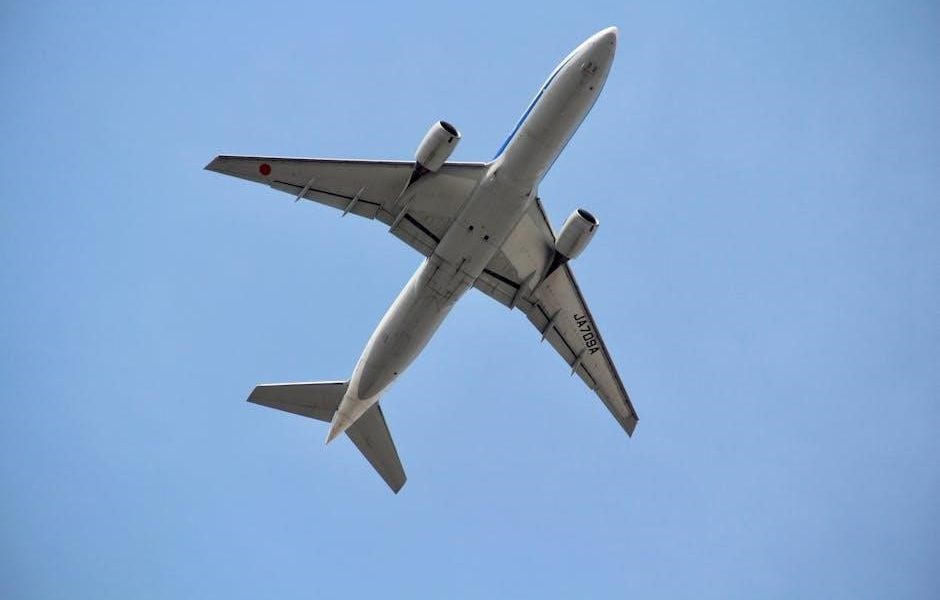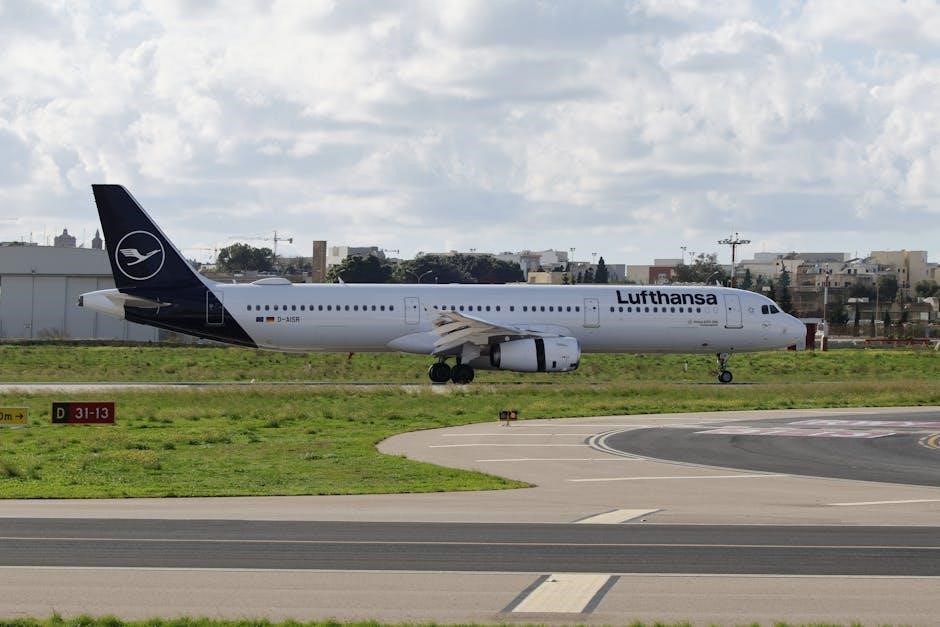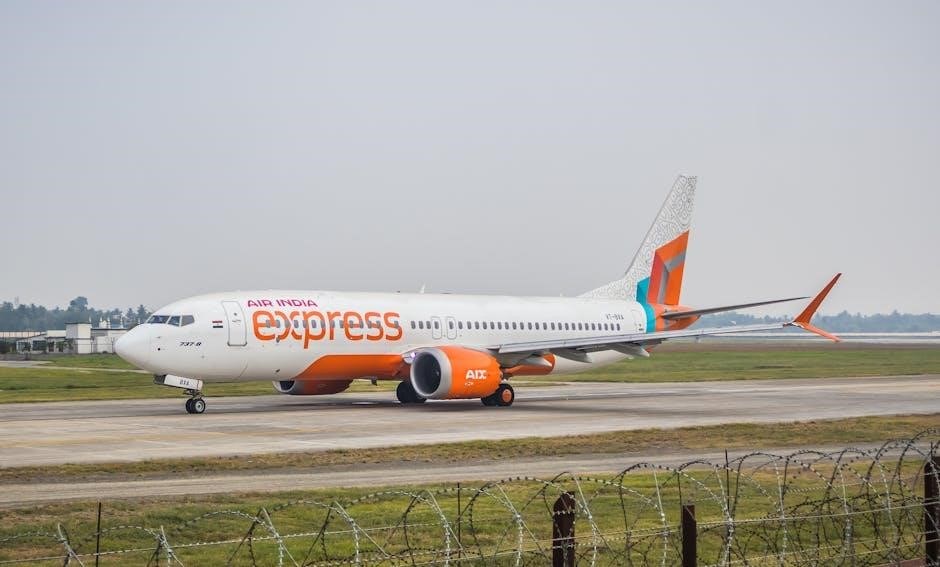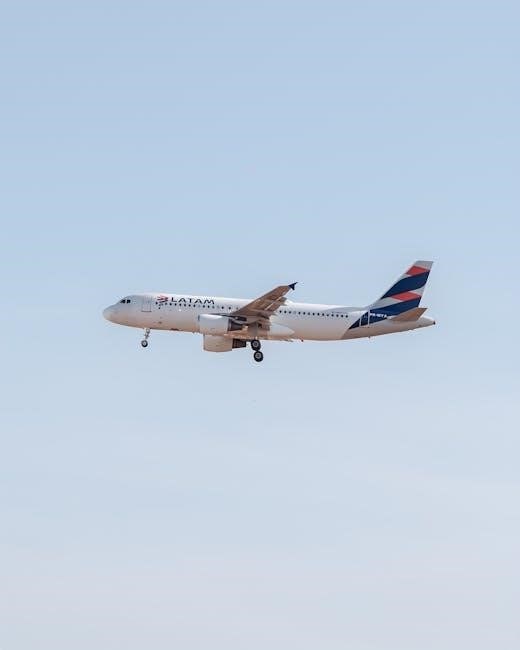
aircraft spotters guide
Aircraft spotting is a captivating hobby where enthusiasts observe and track planes at airports or in the sky, offering insights into aviation’s dynamic world and fostering a sense of community among participants.
What is Aircraft Spotting?
Aircraft spotting is the hobby of observing and tracking aircraft movements, often at airports or in the sky. Enthusiasts, known as spotters, identify planes by their models, liveries, or tail numbers. This activity involves logging sightings, photographing aircraft, and staying updated on aviation developments. It combines an interest in aviation with outdoor exploration, offering a unique way to connect with the dynamic world of flight. Spotters use tools like binoculars, cameras, and digital platforms to enhance their experiences, making it a rewarding pursuit for aviation enthusiasts.
Why People Engage in Aircraft Spotting
People engage in aircraft spotting for various reasons, including a passion for aviation, the thrill of observing different aircraft models, and the joy of photography. It also fosters a sense of community among enthusiasts who share knowledge and experiences. Additionally, spotting allows individuals to connect with history, technology, and the excitement of global travel. Many find it a relaxing and educational hobby, combining outdoor activities with intellectual curiosity. The pursuit of rare sightings and the challenge of identification further enhance its appeal, making it a diverse and engaging pastime.
Essential Equipment for Aircraft Spotters
Binoculars, cameras, and spotting scopes are vital tools for aircraft spotters, enabling them to capture clear images and enhance their spotting experiences effectively.
Binoculars and Optical Gear
Binoculars are essential for aircraft spotters, offering a clear view of distant planes. Opt for 7x or 8x magnification with a 30-40mm objective lens for stability and light gathering. Spotting scopes with tripods provide higher magnification for detailed observations. These tools enhance the ability to identify aircraft models, liveries, and tail numbers, making them indispensable for an engaging spotting experience.
Spotting Scopes and Tripods
Spotting scopes are portable telescopes ideal for detailed aircraft observation, offering higher magnification than binoculars. They are often used with sturdy tripods to ensure stability, reducing shake for clearer views. This setup is particularly useful for identifying aircraft at farther distances, making it easier to spot unique features like tail numbers and liveries. Combining a spotting scope with a tripod enhances the overall spotting experience, allowing enthusiasts to capture precise details with minimal effort and maximum clarity.
Camera Equipment for Photography
For capturing high-quality aircraft images, a DSLR or mirrorless camera is essential, paired with a telephoto lens (70-300mm or higher) to shoot distant planes. Image stabilization reduces blur, while fast autofocus ensures sharp photos of moving aircraft. A tripod provides stability for long shots or low-light conditions. Additional accessories like extra memory cards and a camera rain cover are useful. This setup allows spotters to document their sightings effectively, preserving memories and details of observed aircraft.
Popular Locations for Aircraft Spotting
Major international airports and regional airfields offer prime spots for observing diverse aircraft, with their high traffic and varied airline operations creating exciting opportunities for spotters.
Major International Airports
Major international airports like Heathrow, JFK, and Dubai are hotspots for aircraft spotting due to their high traffic and diverse fleets. These hubs attract enthusiasts eager to capture rare aircraft and unique liveries. Spotters can observe a wide range of planes, from large commercial jets to smaller regional aircraft, making these locations ideal for logging sightings and expanding knowledge of global aviation. The bustling environment offers endless opportunities for photography and learning about different airline operations and aircraft models.
Regional airfields and smaller airports provide unique opportunities for aircraft spotters to observe a variety of aircraft, from general aviation planes to occasional commercial flights. These locations often have less crowded environments, making it easier to spot and photograph aircraft without obstruction. Smaller airports may also host private jets, training flights, and vintage planes, offering a diverse range of sightings. Additionally, regional airfields sometimes serve as bases for cargo or military aircraft, adding to the diversity of aircraft that spotters can encounter. This makes them valuable destinations for enthusiasts seeking less common aircraft. Aircraft spotting requires adhering to airport rules, respecting privacy, and using equipment responsibly without causing disruptions. Ensuring awareness of surroundings and cooperating with airport authorities is essential for a safe and enjoyable spotting experience. Understanding and adhering to airport rules is crucial for aircraft spotters. Most airports prohibit entry into restricted areas, and spotters must stay behind designated observation zones. Photography and drone use may be restricted in certain areas, and spotting near runway thresholds or taxiways is often prohibited; Always carry identification and be prepared to explain your activities if approached by airport staff. Familiarize yourself with local laws and airport-specific guidelines to avoid security concerns or legal issues. Respecting these rules ensures a safe and enjoyable spotting experience for everyone. Aircraft spotters must always prioritize privacy and security. Avoid sharing sensitive information about aircraft, passengers, or airport operations online. Refrain from entering restricted areas, as this can raise security concerns. Be mindful of photography restrictions, especially near military or private aircraft. Respect the privacy of individuals and avoid capturing personal data. Adhering to these guidelines ensures a positive experience for spotters while maintaining trust with airport authorities and the aviation community. Responsible behavior fosters a safe and respectful environment for everyone involved. Understanding airspace laws and photography permissions is crucial for aircraft spotters to avoid legal issues, ensuring compliance with local regulations and respecting privacy rights. Airspace laws regulate where and how aircraft operate, ensuring safety and security. Spotters must know these laws to avoid legal issues, especially near restricted zones. Understanding airspace classifications, such as controlled and uncontrolled airspace, helps spotters stay compliant. Violating these laws can lead to serious consequences, including fines or legal action. Familiarizing oneself with local aviation regulations is essential to enjoy the hobby responsibly and respectfully. Always check for specific rules at your spotting location to maintain both safety and legality. Photography permissions and restrictions vary by location, with airports often having specific rules. Some areas may require permits or prohibit certain types of equipment. It’s crucial to understand these regulations to avoid legal issues. Additionally, respect privacy by avoiding sensitive areas or subjects. Always check with airport authorities before capturing images, especially in secure zones. Adhering to these guidelines ensures a smooth and lawful spotting experience while maintaining respect for security protocols and personal privacy. Staying informed prevents complications and supports responsible hobby practices. Mastering aircraft identification involves recognizing models, brands, and unique features like tail numbers and liveries, enhancing enthusiasts’ ability to accurately log and track sightings effectively. Recognizing aircraft models and brands is a key skill for spotters, involving identifying distinct features like wing shapes, engine placements, and tail designs. Boeing, Airbus, and smaller manufacturers each have unique characteristics. Liveries and logos on aircraft also help in identifying airlines and specific models. This knowledge enhances the spotting experience, allowing enthusiasts to accurately log sightings and differentiate between similar-looking planes. Over time, familiarity with these details becomes second nature, aiding in efficient and enjoyable aircraft spotting sessions. Tail numbers and liveries are essential tools for aircraft identification. Tail numbers, usually located on the fuselage or tail, provide unique identifiers linked to the aircraft’s registration. Liveries, the paint schemes and logos, help distinguish airlines and special editions. Combining these elements allows spotters to accurately identify aircraft, even from a distance. This method is particularly useful for logging sightings and tracking specific planes over time. By mastering tail numbers and liveries, enthusiasts can enhance their spotting accuracy and deepen their understanding of aviation operations. Logging and tracking sightings helps spotters maintain detailed records of observed aircraft, using journals or digital tools to store data efficiently for future reference and analysis. Spotting logs and journals are essential tools for documenting aircraft sightings, allowing enthusiasts to record details like aircraft models, tail numbers, and observation locations. These logs serve as valuable references for tracking progress and identifying patterns over time. Many spotters prefer traditional paper journals for their tactile experience, while others opt for digital apps that offer search and sorting functionalities. Both methods help preserve memories and enhance the overall spotting experience, making them indispensable for dedicated aircraft enthusiasts. Digital tools have revolutionized how aircraft spotters record and manage their sightings. Apps and websites like Spotted Planes allow users to log aircraft details, track locations, and share observations; These platforms often include databases of tail numbers and liveries, enabling quick identification. Additionally, digital tools provide real-time updates, alerts for rare aircraft, and analytics to review spotting history. They also facilitate community engagement, letting spotters compare notes and learn from others. By streamlining the process, digital tools enhance the efficiency and enjoyment of aircraft spotting for enthusiasts worldwide. Aircraft spotting’s future lies in technological advancements, fostering community growth and shared resources, while real-time data and digital tools enhance the hobby’s accessibility and global appeal. Technology has revolutionized aircraft spotting, offering real-time tracking tools like Flightradar24 and PlaneFinder. These platforms use ADS-B data to provide precise aircraft locations and identification. Digital dashboards simplify key metric tracking, enabling spotters to monitor movements efficiently. Smartphone apps now allow instant logging of sightings, enhancing organization and sharing within the community. Advanced camera equipment and optical gear improve photography quality, while online forums and shared databases foster collaboration. These innovations make spotting more accessible, engaging, and interconnected, ensuring the hobby remains vibrant and evolving in the digital age. Aircraft spotting has fostered a thriving global community, with enthusiasts sharing knowledge and resources online. Websites like Spotted Planes offer free platforms for logging sightings, while forums and social media groups connect spotters worldwide. Shared databases and real-time tracking tools enhance collaboration, making the hobby more accessible. As technology advances, the community continues to grow, with spotters contributing to a collective understanding of aviation. This shared passion creates a vibrant, inclusive environment where newcomers and veterans alike can learn and enjoy the thrill of aircraft spotting together.Regional Airfields and Smaller Airports

Safety and Etiquette for Spotters
Airport Rules and Regulations
Respecting Privacy and Security

Legal Considerations for Aircraft Spotters
Understanding Airspace Laws
Photography Permissions and Restrictions

Aircraft Identification Techniques
Recognizing Aircraft Models and Brands
Using Tail Numbers and Liveries for Identification

Logging and Tracking Sightings
Using Spotting Logs and Journals
Digital Tools for Recording Sightings
The Future of Aircraft Spotting
Impact of Technology on Spotting
Community Growth and Shared Resources
Related posts:
Archives
Calendar
| M | T | W | T | F | S | S |
|---|---|---|---|---|---|---|
| 1 | 2 | 3 | 4 | 5 | 6 | |
| 7 | 8 | 9 | 10 | 11 | 12 | 13 |
| 14 | 15 | 16 | 17 | 18 | 19 | 20 |
| 21 | 22 | 23 | 24 | 25 | 26 | 27 |
| 28 | 29 | 30 | 31 | |||
Leave a Reply
You must be logged in to post a comment.